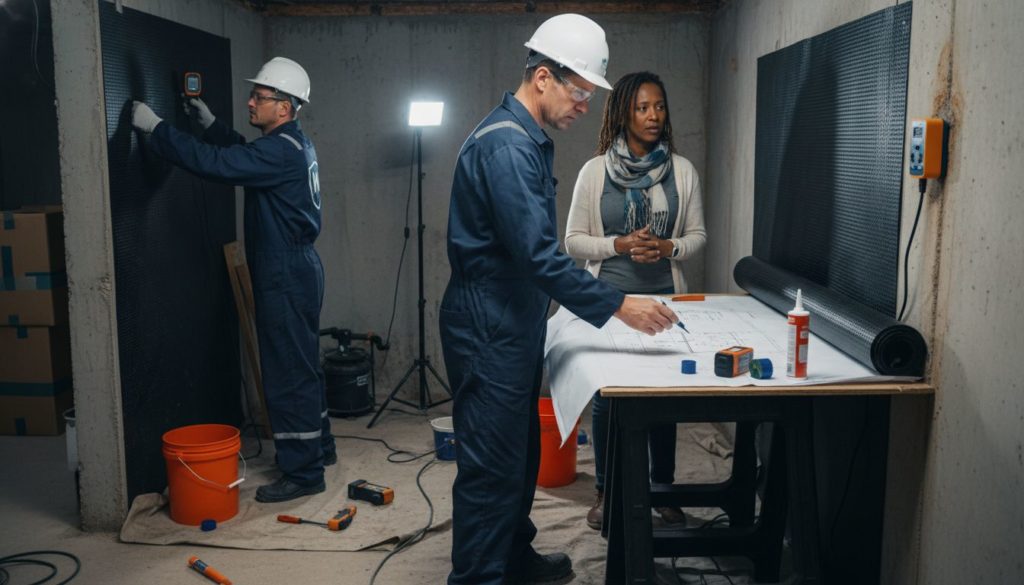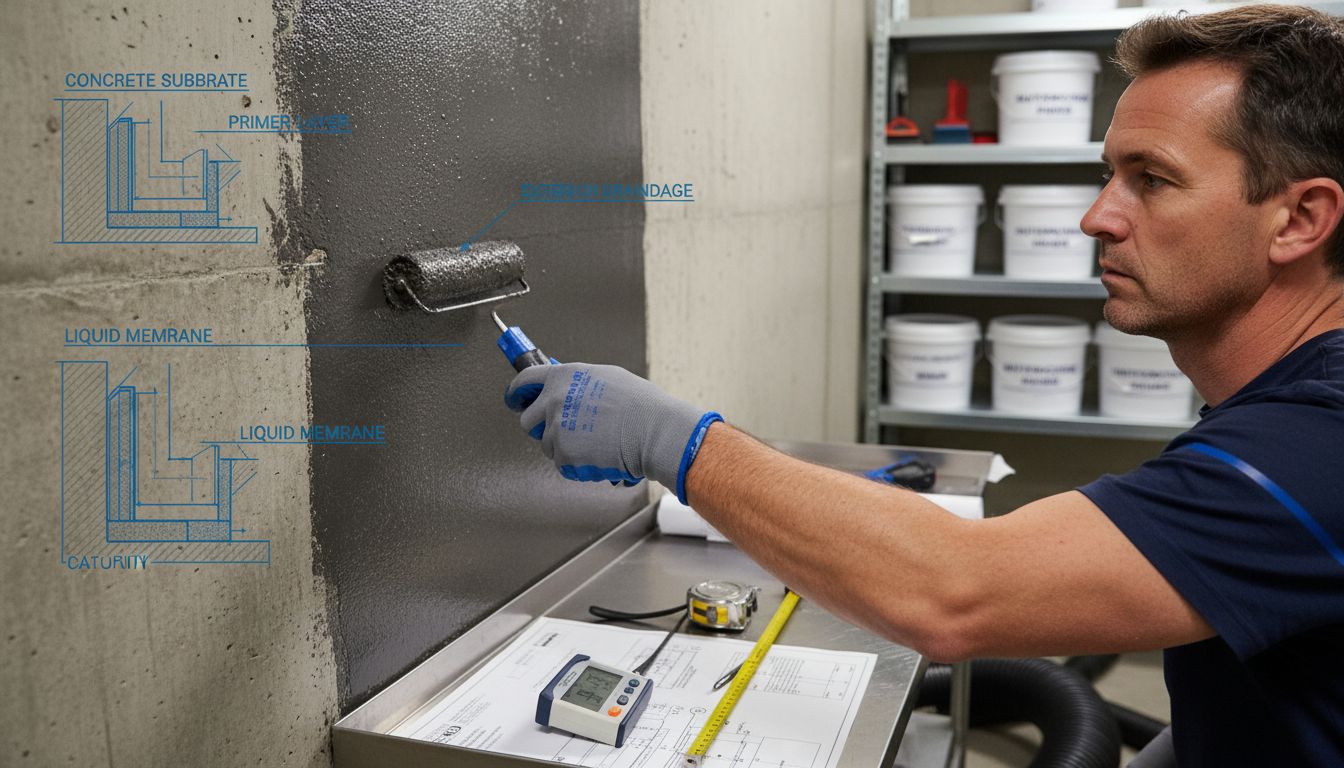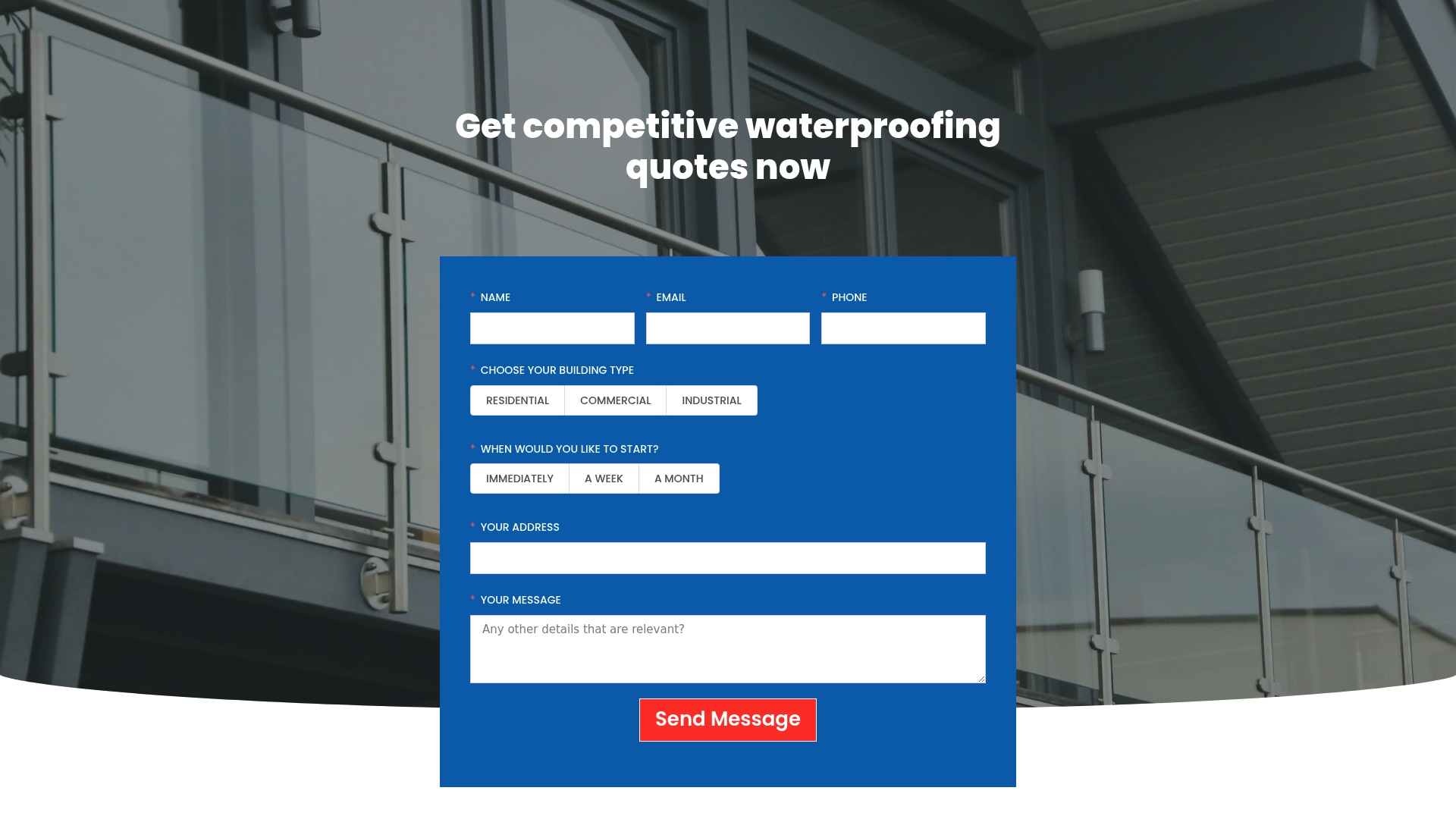Did you know that over half of South African homes experience some form of water intrusion in their basements or foundations? Moisture problems often lead to costly repairs and health hazards if ignored. Understanding basement waterproofing principles puts you in control, helping protect your property’s value and your family’s well-being by preventing avoidable damage right from the start.
Table of Contents
- Defining Basement Waterproofing Principles
- Types of Basement Waterproofing Systems
- How Basement Waterproofing Works in Practice
- Identifying Signs of Water Intrusion and Damage
- Cost Factors and Common Mistakes to Avoid
Key Takeaways
| Point | Details |
|---|---|
| Importance of Waterproofing | Basement waterproofing is essential for protecting structures from moisture and ensuring occupant safety. |
| Moisture Barrier Techniques | Effective waterproofing requires comprehensive moisture barriers and strategic drainage systems, tailored to specific conditions. |
| Signs of Water Intrusion | Early detection of water damage is crucial; vigilant monitoring of signs can prevent extensive structural issues. |
| Cost Considerations | Understanding the cost factors and avoiding common mistakes are vital for effective waterproofing investments. |
Defining Basement Waterproofing Principles
Basement waterproofing is a critical protective strategy designed to prevent moisture infiltration and structural damage in subterranean building spaces. According to gov.za, this process involves constructing walls specifically engineered to resist water penetration, ensuring both occupant health and long-term building durability.
The fundamental principles of basement waterproofing centre around creating comprehensive moisture barriers that protect against ground water, surface runoff, and potential structural vulnerabilities. PRAWA emphasizes the importance of adhering to rigorous industry standards during waterproofing implementation to guarantee optimal structural integrity and safety.
Key waterproofing principles include:
- Comprehensive moisture barrier installation
- Strategic drainage system design
- Proper foundation sealing techniques
- Addressing potential structural weak points
- Regular inspection and maintenance protocols
Successful basement waterproofing requires a multi-layered approach that combines advanced materials, precise engineering techniques, and an understanding of local geological and environmental conditions. Understanding Basement Waterproofing Explained provides deeper insights into the technical nuances of creating robust, long-lasting moisture protection for subterranean spaces.
Types of Basement Waterproofing Systems
Basement waterproofing encompasses several sophisticated systems designed to protect subterranean spaces from moisture intrusion. According to sasas.org.za, South African construction practices utilize a diverse range of waterproofing solutions including liquid applications, torched membranes, cold-applied membranes, injection systems, bituminous waterproofing, mortars, and admixtures.
Each waterproofing system offers unique advantages tailored to specific structural requirements and environmental conditions.
5 Common Exterior Basement Waterproofing Techniques provides deeper insights into selecting the most appropriate method for different building scenarios.
Key waterproofing system categories include:
Here’s a comparison of common basement waterproofing systems and their characteristics:
| System Type | Typical Application | Key Advantages |
|---|---|---|
| External Membrane Systems | Outside foundation walls | Strong barrier Long-lasting protection |
| Interior Drainage Systems | Inside basement perimeters | Manages water ingress Easy inspection |
| Injection Waterproofing | Concrete cracks and joints | Targets leaks Quick repair |
| Crystalline Waterproofing | Concrete additives or coatings | Permanent chemical protection Low maintenance |
- External Membrane Systems: Applied to foundation walls before backfilling
- Interior Drainage Systems: Manage water that penetrates interior basement spaces
- Injection Waterproofing: Seal existing concrete cracks and potential water entry points
- Crystalline Waterproofing: Chemically transforms concrete to block water penetration
As gov.za highlights through Agrément South Africa’s product evaluations, innovative waterproofing technologies continuously emerge, ensuring national standards for effective water resistance are maintained and advanced.
How Basement Waterproofing Works in Practice
Basement waterproofing is a complex process that requires precise implementation and strategic planning. According to gov.za, effective waterproofing demands constructing walls that fundamentally resist water penetration, with local authorities potentially mandating integrated designs to prevent water ingress.
In practical application, waterproofing involves multiple systematic approaches. sasas.org.za highlights that professional techniques include applying liquid membranes, torched membranes, and injection systems – each method carefully tailored to specific site conditions and structural requirements.
The practical implementation typically follows these critical stages:
- Site assessment and moisture mapping
- Identifying potential water entry points
- Selecting appropriate waterproofing methodology
- Preparing surfaces for membrane application
- Precise installation of waterproofing systems
- Post-installation quality verification
For more comprehensive insights into nuanced waterproofing approaches, The Truth About Basement Waterproofing provides an in-depth exploration of practical techniques that property owners should understand before initiating any basement protection project.
Identifying Signs of Water Intrusion and Damage
Water intrusion can silently compromise your property’s structural integrity, making early detection critical. According to sasas.org.za, key indicators of potential water damage include leaking roofs, damp walls, basement leaks, mold growth, water seepage through windows, and crumbling concrete surfaces – each signaling a unique potential structural vulnerability.
PRAWA emphasizes the importance of recognizing these early warning signs to prevent extensive structural damage and maintain building integrity. Visual and sensory cues often provide the first hints of water-related issues, requiring property owners to remain vigilant and proactive.
Critical signs of water intrusion to monitor include:
- Unexplained musty odours
- Visible water stains on walls or ceilings
- White powdery residue on concrete surfaces (efflorescence)
- Peeling paint or wallpaper
- Warped or buckled flooring
- Visible mould or mildew growth
- Unexplained increases in humidity levels
For property owners seeking comprehensive guidance on identifying potential water damage risks, Key Signs Your Property Needs Immediate Waterproofing offers an in-depth exploration of early warning signals that should never be ignored.
Cost Factors and Common Mistakes to Avoid
Basement waterproofing represents a significant investment with complex cost considerations. According to id.org.za, foundation waterproofing expenses in Gauteng typically range from R450 to R1,200 per square meter, with costs heavily influenced by project complexity, selected materials, and required labour intensity.
Professional waterproofing demands careful planning to avoid potentially expensive errors. id.org.za warns that common mistakes like using inappropriate materials or engaging unqualified contractors can dramatically increase overall project costs and risk substantial structural damage.
Key cost factors and potential pitfalls include:
- Material quality and compatibility
- Complexity of existing structural conditions
- Size of the waterproofing area
- Required preparation and surface treatment
- Labour expertise and specialisation
- Long-term maintenance requirements
For property owners seeking comprehensive cost management strategies, Understanding Waterproofing Inspection for Property Owners provides invaluable insights into making informed waterproofing investment decisions while minimising potential financial risks.
Protect Your Property with Expert Basement Waterproofing Solutions
Basements are vulnerable to moisture and water intrusion that can cause costly structural damage and health risks. This guide highlights the crucial waterproofing principles such as creating moisture barriers, effective drainage, and selecting proper materials. If you have noticed signs like damp walls, mould growth, or water stains, it is essential to act quickly. At Pro Waterproofing, we understand the challenges and offer professional services tailored to keep your basement dry and secure.
Discover reliable waterproofing methods backed by local expertise to avoid common costly mistakes. Visit our Uncategorized – Pro Waterproofing section for informative articles and practical advice. Take control of your property’s health today by consulting with trusted specialists ready to deliver lasting solutions. Start your journey towards a water-resistant basement now at Pro Waterproofing.
Frequently Asked Questions
What are the key principles of basement waterproofing?
The key principles include creating comprehensive moisture barriers, strategic drainage system design, proper foundation sealing techniques, addressing potential structural weak points, and implementing regular inspection and maintenance protocols.
What types of basement waterproofing systems are available?
Common types include external membrane systems, interior drainage systems, injection waterproofing, and crystalline waterproofing. Each system offers unique advantages depending on specific structural needs and environmental conditions.
How does basement waterproofing work in practice?
Basement waterproofing involves a series of systematic approaches including site assessment, identifying potential water entry points, selecting appropriate methods, preparing surfaces, and ensuring precise installation of waterproofing systems.
What are the signs of water intrusion in a basement?
Signs include unexplained musty odors, visible water stains, efflorescence on concrete surfaces, peeling paint or wallpaper, warped flooring, and visible mold or mildew growth.



